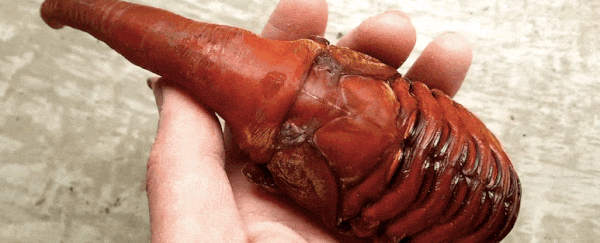Just when we thought we'd seen it all, the internet dishes up a fat, red alien baby that looks like it's been ripped from the scorching sand dunes of Venus (we wish).
In reality, it's just a Hercules beetle in its pupa form, enshrined in a chrysalis as it prepares to take on its adult form. But let's not talk it down too much - this writhing cocoon is about to become one of the largest insects on Earth.
Hercules beetles (Dynastes hercules) are a species of rhinoceros beetle, so called because of the impressive horn-like pincers that emanate from the male's thorax and head.
As adults, the males grow to about 78 mm in length (3 inches), but there are reports of far bigger specimens on the island of Guadeloupe in the Caribbean, which can reach between 170 and 180 mm long (roughly 7 inches).
According to the Guinness World Records, that makes them the longest species of beetle in the world.
(If you took away their horns, that honour would fall on the titan beetle [Titanus giganteus] of South America, with a body length of 15 cm, or 6 inches.)
So how do they get so big?
It helps to start out as big babies - Hercules beetle larvae can grow to more than 150 mm (6 inches) in length, and weigh up to 140 grams (4.9 ounces).
That means when even when it starts out in life, it will barely fit into your outstretched hand.
Once the beetles hit their pupal stage and develop inside their cocoon, they'll lose some of that mass, but they'll gain their horns, as you can see in this amazing footage:

The pupa belongs to insect enthusiast Hirofumi Kawano, who posted the footage to Facebook, saying, "A lot of people think that a chrysalis does not move".
Here's one in its larval form, sans horn:

And here are some adults, in all their glory:

In lieu of any actual aliens, this will do just fine. Thanks, nature.
